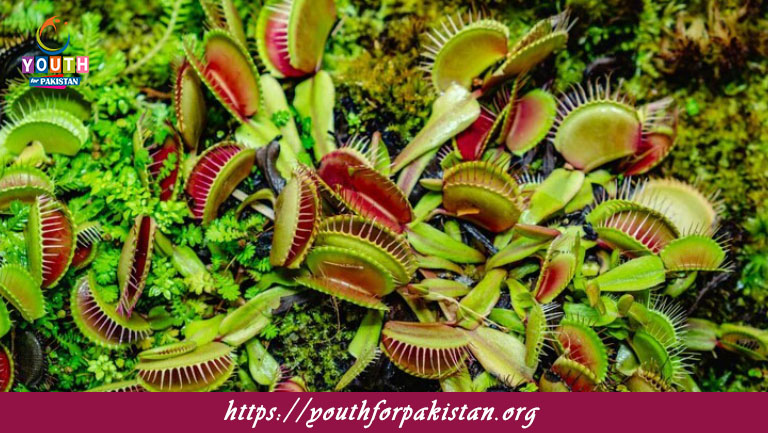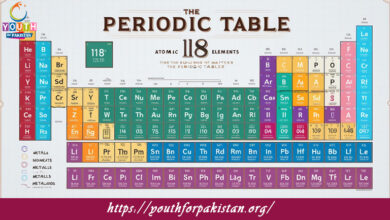Carnivorous Plants/Parasitic Nutrition MDCAT MCQs with Answers

Welcome to the Carnivorous Plants/Parasitic Nutrition MDCAT MCQs with Answers. In this post, we have shared Carnivorous Plants/Parasitic Nutrition Multiple Choice Questions and Answers for PMC MDCAT 2024. Each question in MDCAT Biology offers a chance to enhance your knowledge regarding Carnivorous Plants/Parasitic Nutrition MCQs in this MDCAT Online Test.
Which of the following is an example of a carnivorous plant?
a) Rose
b) Venus flytrap
c) Oak tree
d) Sunflower
Which mechanism does a Venus flytrap use to capture prey?
a) Sticky leaves
b) Pitfall trap
c) Snap trap
d) Flypaper trap
What is the main nutrient carnivorous plants obtain from their prey?
a) Nitrogen
b) Glucose
c) Oxygen
d) Carbon dioxide
Which of the following is a parasitic plant?
a) Venus flytrap
b) Mistletoe
c) Orchid
d) Cactus
What do parasitic plants rely on their host plants for?
a) Water and nutrients
b) Carbon dioxide
c) Light
d) Soil
Which carnivorous plant uses a pitfall trap mechanism?
a) Venus flytrap
b) Sundew
c) Pitcher plant
d) Mistletoe
How do parasitic plants such as dodder attach themselves to their hosts?
a) Sticky seeds
b) Haustoria
c) Roots
d) Flowers
Which part of a pitcher plant is modified to trap insects?
a) Leaves
b) Roots
c) Flowers
d) Stem
Which plant is an example of a hemiparasite?
a) Mistletoe
b) Venus flytrap
c) Pitcher plant
d) Sundew
Which of the following plants captures prey using sticky substances on its leaves?
a) Pitcher plant
b) Venus flytrap
c) Sundew
d) Mistletoe
Which of the following is NOT a carnivorous plant?
a) Bladderwort
b) Mistletoe
c) Sundew
d) Venus flytrap
How do carnivorous plants digest their prey?
a) Through enzymes
b) Using chlorophyll
c) Via photosynthesis
d) By bacteria
What is the purpose of the digestive enzymes in carnivorous plants?
a) To capture prey
b) To digest proteins from prey
c) To produce oxygen
d) To trap light
Which of the following is a characteristic of parasitic plants?
a) They photosynthesize independently
b) They obtain nutrients from host plants
c) They live in water
d) They trap insects
Which carnivorous plant uses underwater traps to capture prey?
a) Pitcher plant
b) Sundew
c) Bladderwort
d) Venus flytrap
Which structure do parasitic plants like Cuscuta use to penetrate the tissues of host plants?
a) Roots
b) Haustoria
c) Tendrils
d) Leaves
Which of the following plants is an example of a holoparasite?
a) Mistletoe
b) Cuscuta (dodder)
c) Pitcher plant
d) Sundew
What type of habitat do most carnivorous plants live in?
a) Desert
b) Nutrient-poor soils
c) Rainforest canopy
d) Freshwater lakes
Which carnivorous plant has specialized bladder-like structures for trapping prey?
a) Venus flytrap
b) Sundew
c) Pitcher plant
d) Bladderwort
How do parasitic plants obtain water from their host plants?
a) Through their roots
b) Through stomata
c) Via haustoria
d) Using their leaves
Which plant is known to trap insects with sticky mucilage on its leaves?
a) Venus flytrap
b) Bladderwort
c) Sundew
d) Pitcher plant
What is the primary adaptation of parasitic plants?
a) Independent photosynthesis
b) Haustorial connections to host plants
c) Underground stems
d) Deep roots
Which carnivorous plant uses a “snap-trap” mechanism to capture its prey?
a) Sundew
b) Venus flytrap
c) Bladderwort
d) Pitcher plant
Which of the following parasitic plants primarily uses the phloem of the host for nutrients?
a) Mistletoe
b) Venus flytrap
c) Sundew
d) Bladderwort
What do carnivorous plants gain from digesting insects?
a) Water
b) Nitrogen and other minerals
c) Oxygen
d) Glucose
Which of the following is a holoparasitic plant?
a) Mistletoe
b) Dodder (Cuscuta)
c) Venus flytrap
d) Bladderwort
How do pitcher plants lure insects into their traps?
a) Bright colors and nectar
b) Snap-trap movement
c) Sticky leaves
d) Underground suction
Which type of parasitic plant lacks chlorophyll and relies entirely on its host?
a) Mistletoe
b) Dodder
c) Venus flytrap
d) Bladderwort
Which enzyme is produced by carnivorous plants to digest prey?
a) Amylase
b) Pepsin
c) Protease
d) Lipase
Which carnivorous plant can live in water?
a) Bladderwort
b) Venus flytrap
c) Sundew
d) Mistletoe
What role does nectar play in carnivorous plants like pitcher plants?
a) Digesting prey
b) Attracting insects
c) Photosynthesis
d) Storing water
What is the primary source of energy for parasitic plants?
a) Sunlight
b) Host plants
c) Soil nutrients
d) Water
Which of the following plants captures prey using snap-traps?
a) Pitcher plant
b) Sundew
c) Venus flytrap
d) Bladderwort
Which of the following is a characteristic of carnivorous plants?
a) They photosynthesize independently
b) They grow in nutrient-poor soils
c) They depend entirely on their host for food
d) They grow in deserts
What is the main benefit parasitic plants gain from their host?
a) Light
b) Water and nutrients
c) Oxygen
d) Space to grow
Which part of a pitcher plant is modified to form the “pitcher” that traps prey?
a) Stem
b) Leaf
c) Root
d) Flower
Which of the following is a type of parasitic nutrition?
a) Holoparasitism
b) Autotrophism
c) Saprophytism
d) Mutualism
Which carnivorous plant uses air-filled bladders to capture tiny aquatic prey?
a) Sundew
b) Bladderwort
c) Venus flytrap
d) Pitcher plant
Which of the following plants relies entirely on another plant for water and nutrients?
a) Mistletoe
b) Sundew
c) Bladderwort
d) Cuscuta (dodder)
If you are interested to enhance your knowledge regarding Physics, Chemistry, Computer, and Biology please click on the link of each category, you will be redirected to dedicated website for each category.





